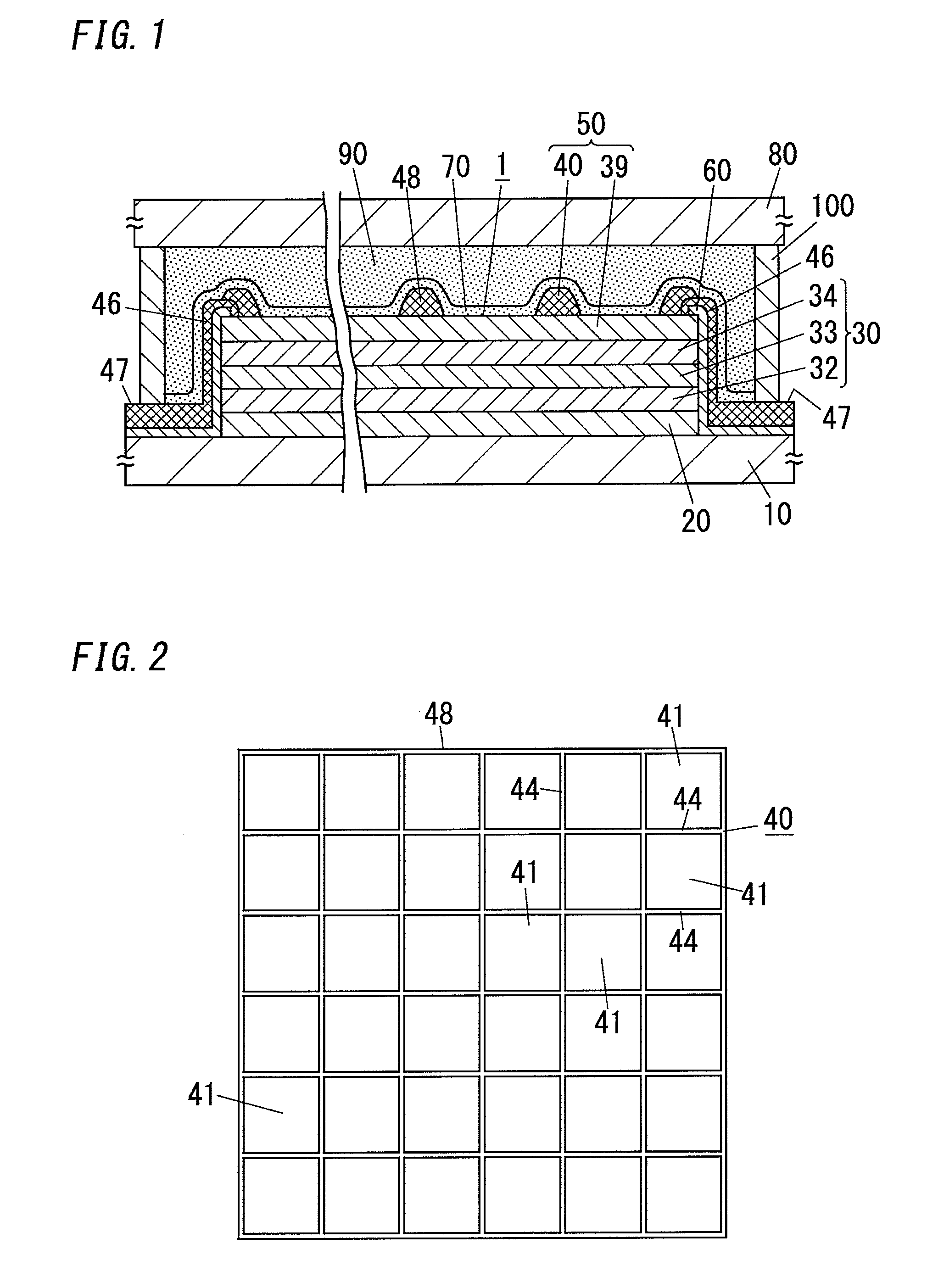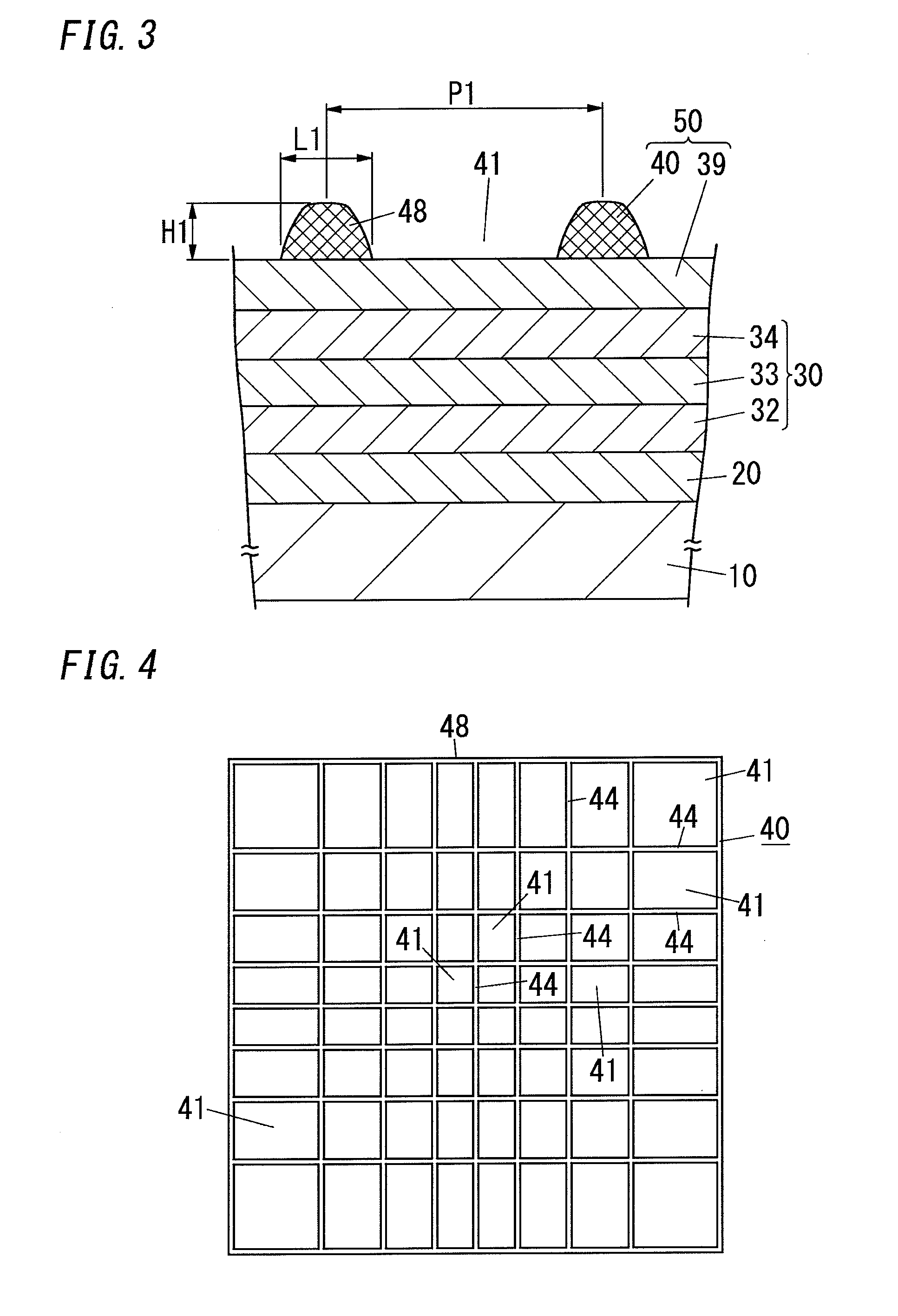Organic electroluminescence element
- Summary
- Abstract
- Description
- Claims
- Application Information
AI Technical Summary
Benefits of technology
Problems solved by technology
Method used
Image
Examples
example 1
[0096]The organic electroluminescence element having the structure as shown in FIG. 1 was manufactured as Example 1.
[0097]Manufacturing conditions of the organic electroluminescence element of Example 1 are as follows.
[0098]To manufacture the organic electroluminescence element of Example 1, the first step was performed. In the first step, first a non-alkali glass plate (No. 1737 available from Corning Incorporated) with a thickness of 0.7 mm was prepared as the substrate 10 and a cathode serving as the first electrode 20 of aluminum film having a thickness of 80 nm was formed on the surface of the substrate 10 by a vacuum vapor deposition method.
[0099]After the first step, the second step of forming the functional layer 30 was performed. In the second step, the light-emitting layer 32, the hole transport layer serving as the carrier transport layer 33, and the hole injection layer serving as the carrier injection layer 34 were formed sequentially.
[0100]In the process of forming the...
example 2
[0108]The organic electroluminescence element of Example 2 was prepared to have the same structure as the organic electroluminescence element of Example 1, except the transparent protection layer 70 of the present example had a thickness of 40 nm.
example 3
[0109]The organic electroluminescence element of Example 3 was prepared to have the same structure as the organic electroluminescence element of Example 1, except the transparent protection layer 70 of the present example had a thickness of 25 nm.
PUM
 Login to View More
Login to View More Abstract
Description
Claims
Application Information
 Login to View More
Login to View More - Generate Ideas
- Intellectual Property
- Life Sciences
- Materials
- Tech Scout
- Unparalleled Data Quality
- Higher Quality Content
- 60% Fewer Hallucinations
Browse by: Latest US Patents, China's latest patents, Technical Efficacy Thesaurus, Application Domain, Technology Topic, Popular Technical Reports.
© 2025 PatSnap. All rights reserved.Legal|Privacy policy|Modern Slavery Act Transparency Statement|Sitemap|About US| Contact US: help@patsnap.com



